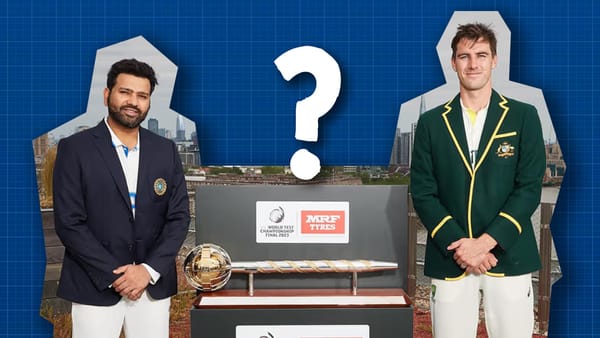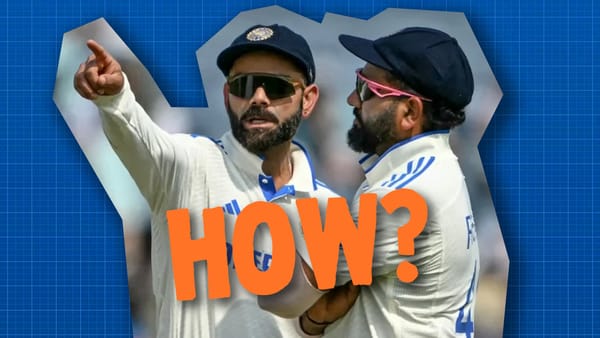Wides at the death
Looking at the end of the game when bowlers hang the ball wide.
Wides in T20 cricket are worth 2.3 runs in total. Obviously, a wide is worth one run, I think we can all agree on that in terms of its penalty, but the ball has to be rebowled. And each ball in T20 has a strike rate of 1.3 runs.
So in total, when you bowl a wide it costs your team 2.3 runs.
However, not all balls in T20 are worth 1.3 runs.

The first ball of the seventh over is worth .84 runs, because the fielders have gone out and everyone pretty much blocks that out.
And the last ball of the innings is worth 1.85 runs per ball, exactly a run more.

So a wide on that ball is also more expensive. It's also far more common. You will only deliver a wide when something goes horribly wrong when you know the opposition is likely to knock a single around the corner.
When there's a beefed-up hitter on 40 from 20 balls on strike for the last ball, you're likely to bowl a wide far more because you're trying to hide the ball from them or move around the crease or you just shit yourself.
A while back I wrote a short story on my father, you can find it here
— Jarrod Kimber (@ajarrodkimber) 9:20 PM ∙ Apr 12, 2022
The other time you see the most wides is early on as the new ball swings around, or even the spinners sometimes struggle with the new ball.
You can see it when you look at the stats that follow that theory. Cricket with Ash has sent this over from all the wides ever bowled in the IPL.

The new ball can't always be controlled. At the end, as batters move around, and set themselves for big hits, bowlers start to deliver a lot more wides. It is almost twice as many wides as you see in the middle of the game.
Early happens naturally; the death is when they are forced on you. And we saw a good contest of this the other day where Sunrisers took on Chennai. Ravi Jadeja, who has been one of the best death hitters for a while, went up against Bhuvi Kumar, one of the best death seamers.
Bhuvi actually started the over against Dwayne Bravo, and followed him first ball and delivered a wide down the legside. The next ball was a full toss that Bravo hit for a down the ground four, and then a mishit went out to leg. This meant that in two balls, Chennai already had six runs.
But now Jadeja had four balls to swing away with. Bravo is a good death hitter, in the last over of the match over the last few years he's scoring at great, but Jadeja is next level.

Even if you split the difference, you are assuming this over is going to around 14.5 runs per over coming in. With four legal balls left, two three boundaries can go well beyond that.
So Bhuvi decided to go wide to Jadeja. The reason for this is quite simple, at the death, Jadeja is trying to hit everything over mid-on and mid-wicket.

Or just the legside in general. You can see just how much he wants to hit there. He knows his spots. And Bhuvi knew that, so he was going to make him drag it.
The problem was he delivered two consecutive wides, one a surprise quick short one that Jadeja was probably upset he missed. And then a cutter which went a bit further way off the pitch. That meant that after two legal balls there had been three wides and eight runs.
And Jadeja was still on strike. But Bhuvi stayed with this line, and the next ball he missed the Yorker and provided a full toss. But Jadeja could only mistime it straight up in the air and was caught.
The rest of the over the was another wide, and then three mishit twos to finish it. The over went for 15 runs. Which is not a small amount. But with a set Jadeja, and Bravo, but it's just .5 more than par.

But if you just focus on the Jadeja balls, he paid two runs to get through Jadeja. You would certainly accept that. Of course the problem would usually come if it didn't work, and when he slipped in that full toss, Jadeja hits it for an eight.
When bowling to someone like Jadeja, the wides is a pretty sound tactic. The wides that cost him more was the one to start and after Jadeja was out. The actual plan to Jadeja worked.
The wides look ugly, and mathematically it doesn't always add up. But keeping the ball as far away from Jadeja's hitting zone means you are more likely to dismiss him. For most of his career, the batter who faced the most wides was Chris Gayle.
This has been happening for a long time. Bowlers are willing to deliver wides at certain times, even if it goes against cricket logic. In that last over, a penally of one run, or 2.86 runs, is not as much as Jadeja dropping 37 runs in six balls.
I suppose cricket's question is this ok? We see a lot of wides at the death. Should wides in T20 be worth two runs, or even have a free hit? Is that fair to the bowlers who are already pretty hampered by their limited space?
The MCC recently made it easier for bowlers by relaxing the Wides law that starts in October:
Law 22.1 – Judging a Wide
In the modern game, batters are, more than ever, moving laterally around the crease before the ball is bowled.
It was felt unfair that a delivery might be called ‘Wide’ if it passes where the batter had stood as the bowler entered his/her delivery stride. Therefore, Law 22.1 has been amended so that a Wide will apply to where the batter is standing, where the striker has stood at any point since the bowler began their run up, and which would also have passed wide of the striker in a normal batting position.
This makes sense, but also means the wides will be wider in the future. We saw Robin Uthappa facing with one foot on the stump line and the other on the return crease. Meaning a bowler was penalised for delivering a ball just outside the return crease that Uthappa could have easily hit in his new normal stance.
When a batter is hitting, bowlers will try to keep the ball away from them. That will means wides, it's been part of our game for a while. The penalty is not enough. So the question is, do we want bowlers penalised more to get more boundaries into the game? Or are we ok with the constant rebowl of what are usually fairly terrible deliveries?




